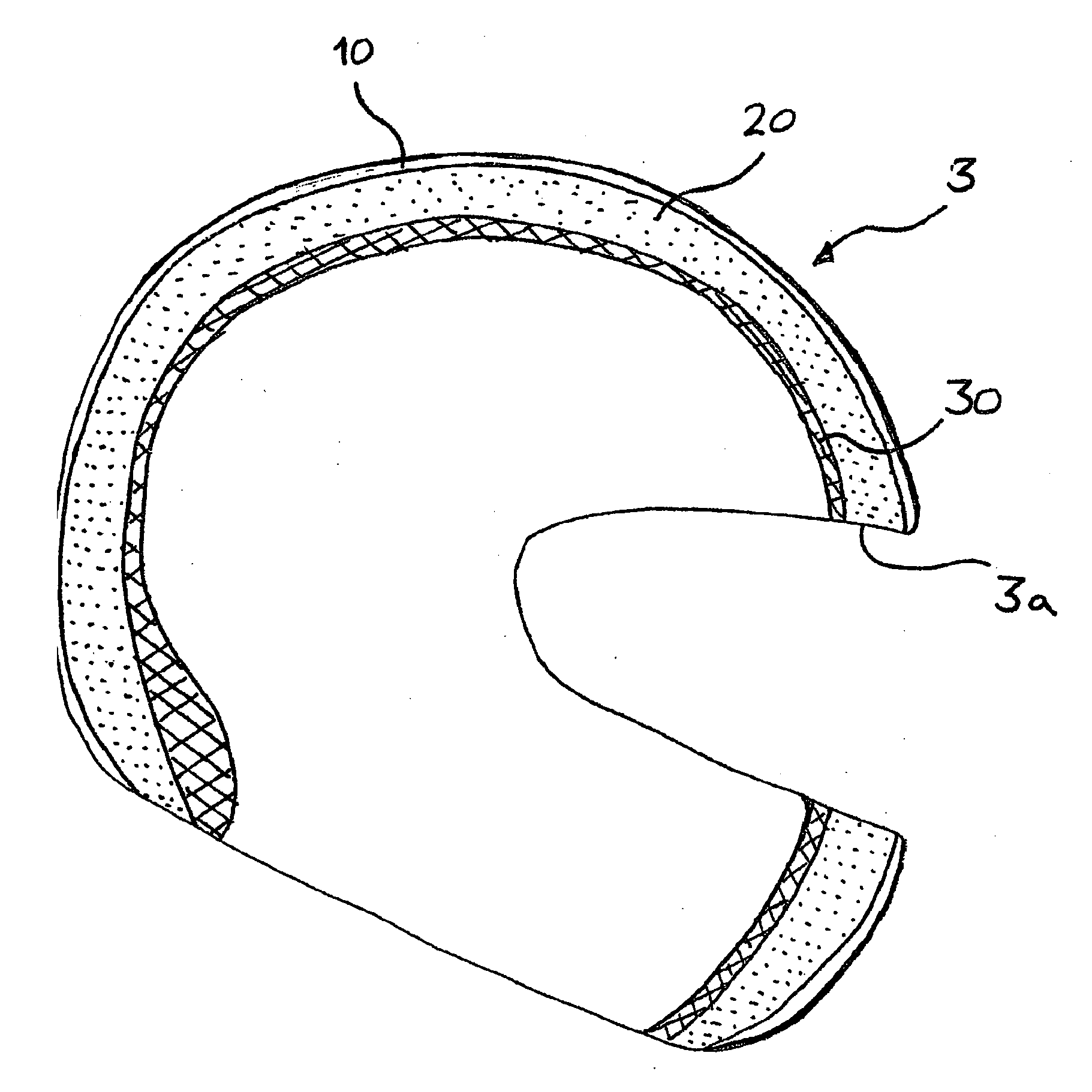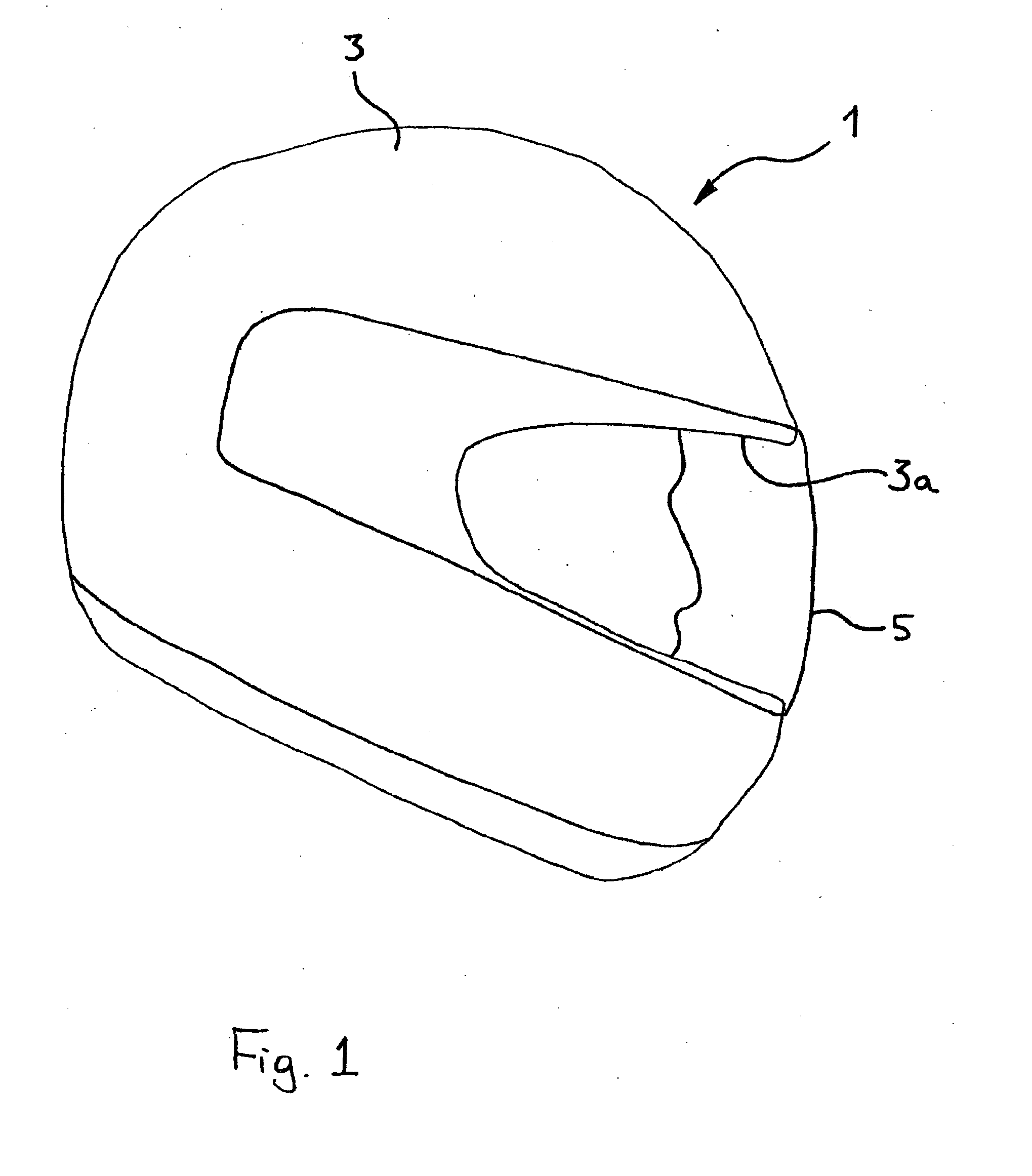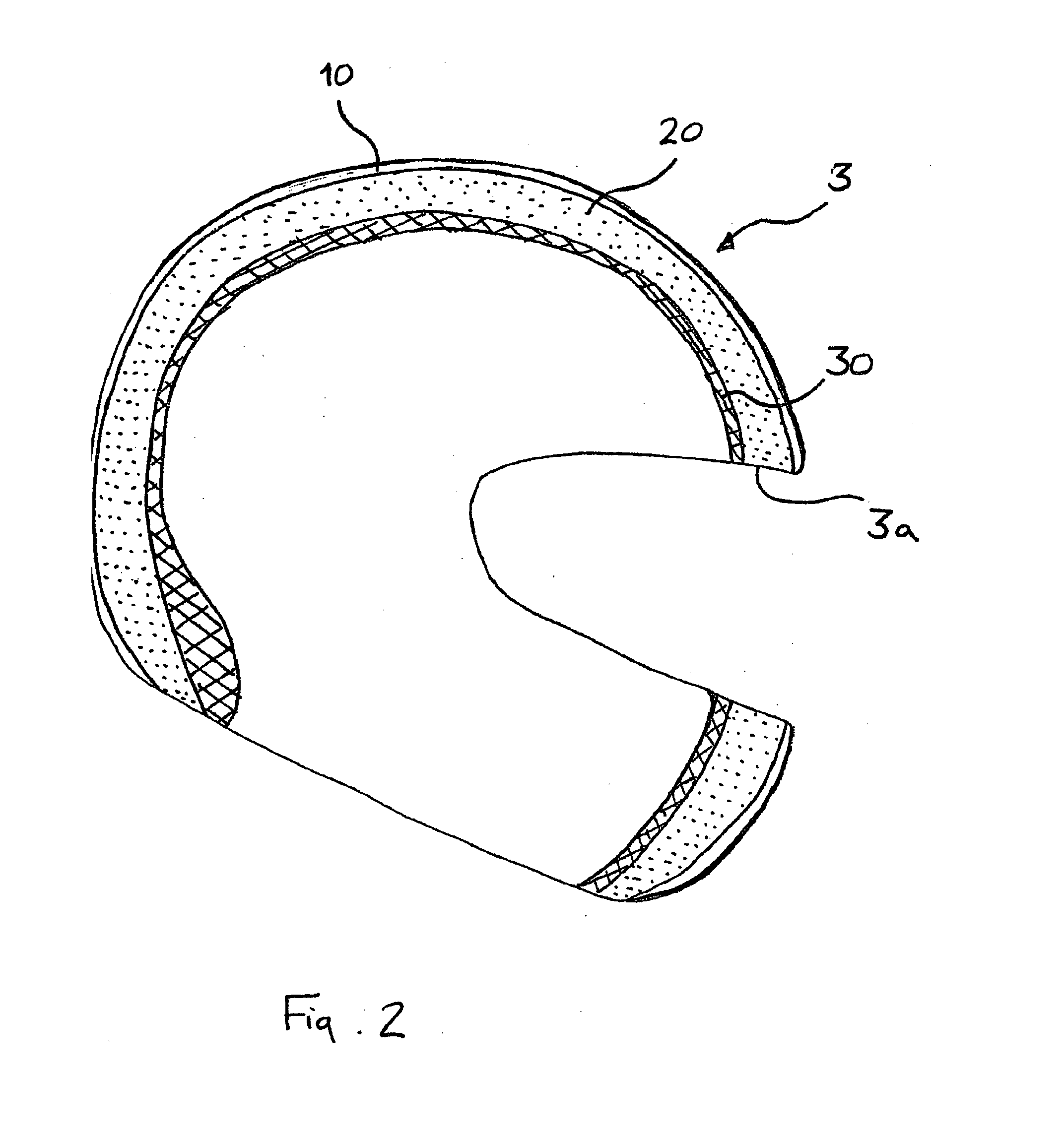Brain cooling device
a brain cooling and cooling device technology, applied in the field of headwear, can solve the problems of brain damage being unavoidable, brain damage may already be experienced, and injuries suffered, so as to achieve significant cooling, avoid brain damage, reduce neurological deterioration
- Summary
- Abstract
- Description
- Claims
- Application Information
AI Technical Summary
Benefits of technology
Problems solved by technology
Method used
Image
Examples
first embodiment
[0050]the main body 3 of a motorcycle safety helmet is illustrated diagrammatically in FIG. 4, which details the main constructional elements of the motorcycle helmet main body 3.
[0051]Similarly to the known motorcycle safety helmet described above with reference to FIGS. 1 to 3, the motorcycle safety helmet main body 3 includes a rigid outer shell 10, inside which is provided an impact absorbing material layer 20. An inner comfort layer 30 is furthermore arranged within the interior of the motorcycle safety helmet main body 3, to provide a contact surface with the head of a wearer of the motorcycle safety helmet.
[0052]It will be appreciated that although the illustrated embodiments of the motorcycle safety helmet of the present invention are illustrated as full-face safety helmets, other known forms of motorcycle safety helmet may be adapted to incorporate a suitable endothermic reactor and triggering device, according to the principles set forth herein. Specifically, endothermic r...
second embodiment
[0069]FIG. 5 shows a motorcycle safety helmet main body 3, including the same reactor inner layer 40 and reactor outer layer 50 as shown in FIG. 4. In the embodiment of FIG. 5, multiple plungers 60 are provided as trigger mechanisms by which to initiate the endothermic reaction between the inner layer 40 and outer layer 50. The plunger trigger mechanism 60 is configured so that, during the contact expected in normal use between the head of the motorcyclist and the plunger, no triggering action will take place. However, during an impact situation, the forces applied by the user's head against the sides of the helmet will cause the plungers 60 to be depressed, initiating the reaction between the substances in the inner layer 40 and outer layer 50.
[0070]FIGS. 6 to 8 show alternative configurations of how the inner comfort layer 30, inner reactor layer 40 and outer reactor layer 50 may be arranged so as to be better accommodated, comfortably, within the confines of the motorcycle safety...
PUM
 Login to View More
Login to View More Abstract
Description
Claims
Application Information
 Login to View More
Login to View More - R&D
- Intellectual Property
- Life Sciences
- Materials
- Tech Scout
- Unparalleled Data Quality
- Higher Quality Content
- 60% Fewer Hallucinations
Browse by: Latest US Patents, China's latest patents, Technical Efficacy Thesaurus, Application Domain, Technology Topic, Popular Technical Reports.
© 2025 PatSnap. All rights reserved.Legal|Privacy policy|Modern Slavery Act Transparency Statement|Sitemap|About US| Contact US: help@patsnap.com



